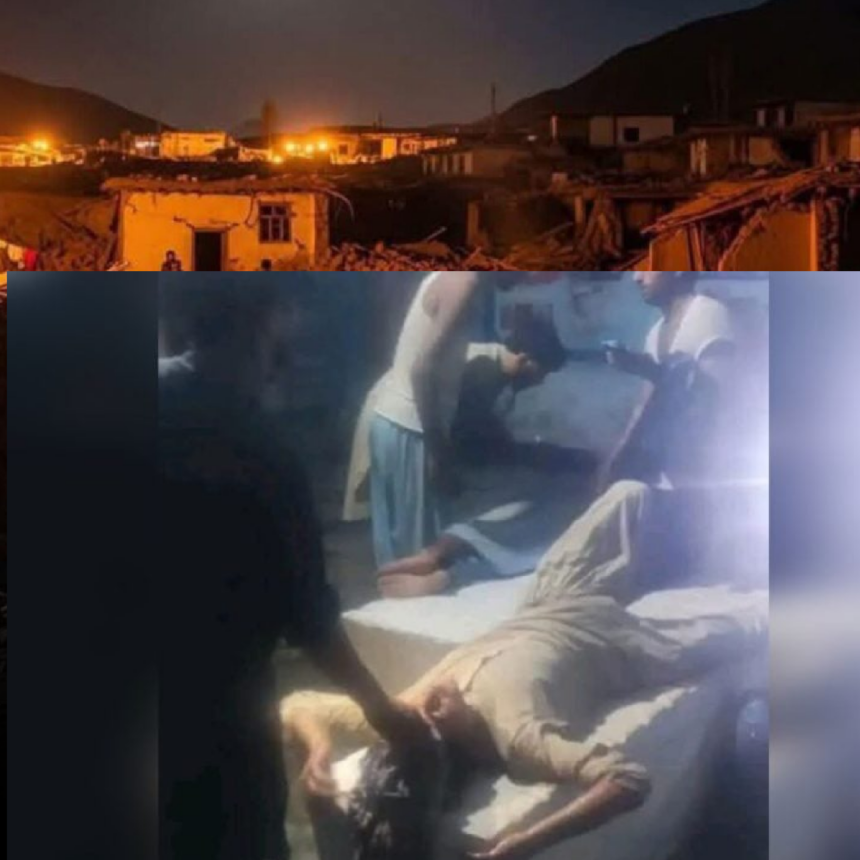RASC News Agency: The devastating earthquake that struck Kunar province in the early hours of Monday, September 1, has unleashed a humanitarian catastrophe, with confirmed fatalities now exceeding 500 and injuries surpassing 2,500. Survivors recount a night of terror as the tremor tore through homes and villages, followed by a series of violent aftershocks that left entire districts reduced to rubble. The Taliban-controlled Disaster Management Authority reluctantly released these figures, yet residents on the ground insist the actual toll is likely far higher, as countless families remain trapped beneath collapsed homes. Local witnesses described the earthquake as one of the most destructive disasters in recent memory, with cries of the injured echoing through the ruins while organized rescue teams were nowhere to be seen.
According to villagers, the worst devastation occurred in the districts of Nurgal, Suki, Watapur, Manugi, and Chapa Dara, where entire communities have been flattened. In Nurgal alone, villages such as Sholt, Arit, Mamagul, and Diraw have been almost completely wiped from the map. “We are digging with our bare hands to pull our neighbors from the rubble,” said Rahmatullah, a resident of Nurgal (name changed for security reasons). “No help has come. We have been abandoned.” Telecommunications networks across Kunar remain largely disabled after critical infrastructure collapsed, isolating communities and paralyzing coordination of relief. Survivors told media that while villagers search for loved ones with rudimentary tools, the Taliban’s promises of aid have yet to materialize in any meaningful form.
In neighboring Nangarhar and Laghman, at least ten deaths and 25 injuries have been reported, though local residents fear the numbers are understated. More alarming, hospitals in Nangarhar are grappling with a severe shortage of female doctors, a direct result of Taliban policies that have driven women out of the healthcare system. This absence has left wounded women and girls without urgent medical care, underscoring how the regime’s systematic exclusion of women is deepening the suffering in the wake of disaster. While Taliban officials claim rescue teams have been dispatched from Kabul and adjoining provinces, survivors dismiss these statements as hollow propaganda. Aid delivery remains sporadic, delayed, and grossly insufficient. Damaged roads, lack of machinery, and bureaucratic paralysis have left desperate communities with no lifeline. “We have seen no government help only villagers helping villagers,” said Zarmina, a resident of Suki district (pseudonym). “The Taliban come with cameras to film their presence, but they bring no real assistance.”
Humanitarian observers warn that the scale of destruction is beyond the Taliban’s capacity or willingness to address. Analysts note that the regime, while eager to exploit disasters for international aid, consistently fails to provide timely relief or infrastructure investment that could mitigate such tragedies. The earthquake has thus become yet another stark reminder of the Taliban’s hollow governance, where ideology eclipses the most basic duties of protecting and rescuing citizens. As survivors continue to claw through the rubble without proper equipment, the death toll is expected to rise sharply. For many Afghanistani families in Kunar, Nangarhar, and Laghman, the night of the earthquake will be remembered not only as a natural calamity, but also as a moment when the Taliban’s incompetence and indifference turned disaster into an even greater human tragedy.






